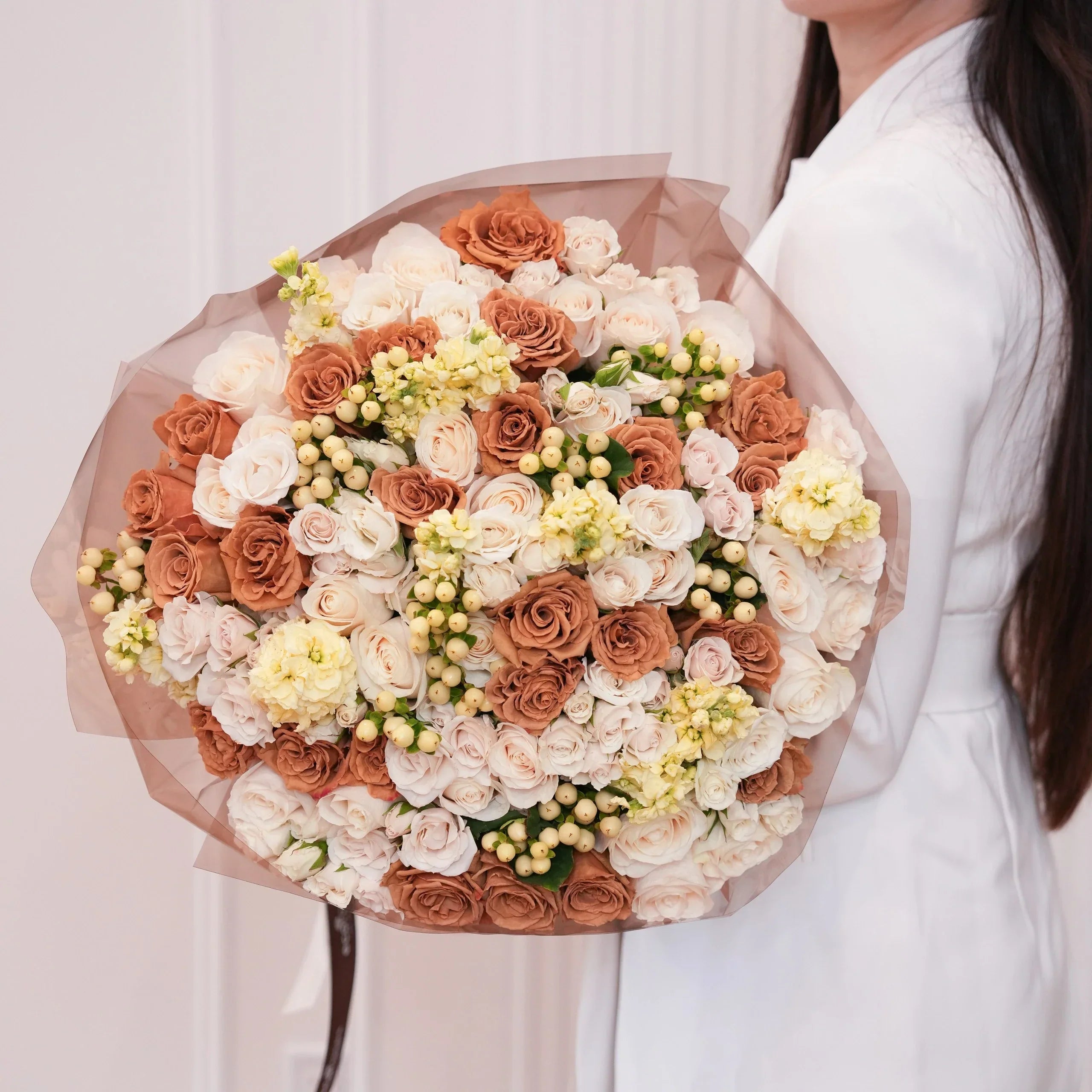Flowers may appear delicate-soft petals, vivid colors, gentle scents-but behind that beauty lies an arsenal of defense strategies honed by millions of years of evolution. From sticky surfaces to chemical repellents, from mimicry to structural fortresses, blooms are anything but passive. They protect their reproductive success, their seeds, and ultimately their lineage.
As you browse through curated bouquets or select a single elegant bloom from a collection of crafted botanical collections ready for display, remember: the same traits that make a flower desirable in your home often served as survival tools in the wild.
In this article we’ll explore how flowers defend themselves-physically, chemically and behaviorally. We’ll examine the mechanisms, the trade-offs, and how understanding this science deepens our appreciation for every arrangement.
Why Do Flowers Need Defenses?
Unlike animals, plants-including flowering plants-can’t flee from predators, pests or pathogens. They are rooted in place, exposed to herbivores, insects, fungal infections and environmental stress. For flowering plants (angiosperms), defending the reproductive structures (buds, petals, nectar, pollen) is especially critical.
According to Encyclopaedia Britannica, plants employ an array of structural and chemical defense mechanisms to deter or resist damage.
The same applies to flowers: because the bloom is crucial for pollination and reproduction, it becomes both an attractor and a target. Thus, flowers walk a fine line-attracting beneficial pollinators while repelling or confusing detrimental visitors.
Physical Defenses: The First Line
Many self-defending flowers include physical traits that create barriers or deterrents:
-
Thorns, spines, prickles: While more common in leaves and stems, some floral structures incorporate spines or sharp bracts to deter large herbivores.
-
Trichomes and hairs: Fine hairs on petals or around buds may trap or impede insects, making it difficult for pests to reach nectar or pollen.
-
Sticky petal surfaces: Some flowers develop sticky or glandular secretions on petals that can trap insects or hinder crawling herbivores. A study of the Andean plant Bejaria resinosa found that sticky flower morphs suffered less florivore damage.
-
Tough or waxy textures: Thick cuticles, waxy coatings or rigid tissue can reduce feeding or penetration by insects and pathogens.
These physical defenses often serve as the first gatekeepers, preventing entry or damage before the flower must trigger chemical responses.
Chemical Defenses: Invisible Yet Powerful
When physical barriers aren’t enough, flowers rely on chemical warfare. Plants synthesize a huge variety of compounds-secondary metabolites-that deter herbivores, discourage pathogens, or even warn neighboring plants.
Key mechanisms include:
-
Alkaloids, tannins, phenolics: These can render the tissues unpalatable, toxic or difficult to digest.
-
Volatile organic compounds (VOCs): Emitted scents that either repel pests or attract predators/parasitoids of those pests. Some flowers trigger these when under attack.
-
Hormonal signaling pathways: Hormones like jasmonic acid (JA), salicylic acid (SA) and ethylene regulate defense gene expression when damage or threat is detected.
For example, when a petal is wounded or a bud pierced, the flower can activate jasmonate signaling pathways which increase production of deterrent compounds and emit VOCs to warn neighboring tissues.
Trade-Offs: Defense Versus Attraction
One of the fascinating aspects of flower defense is the trade-off: the same traits that attract pollinators (colour, scent, nectar) can also attract pests. Therefore, flowers must balance between being appealing and being protected.
The sticky petals of Bejaria resinosa, for instance, reduce damage from florivores but may also interfere with pollinator access or increase risk of trapping beneficial insects.
This context-dependency means not all defense traits are beneficial all the time. Flowers often evolve conditional defenses that activate when needed, minimizing cost. Induced defenses help flowers reduce expenditure when threats are low.
Case Study: Floral Stickiness in High-Andean Flowers
A detailed field study looked at high-Andean populations of Bejaria resinosa and compared sticky flower morphs with non-sticky ones. The sticky morphs suffered fewer herbivore visits, had higher fruit set in some populations, and emitted different volatile profiles.
This illustrates how floral defenses are not just theoretical-they significantly affect reproductive success.
Molecular Mechanics: What’s Happening Inside the Bloom
At the molecular level, flower defense involves:
-
Signal Perception: Mechanoreceptors or herbivore-induced damage detection triggers signals.
-
Signal Transduction: Hormonal cascades (e.g., JA, SA) activate transcription factors, defense gene expression.
-
Metabolite Production: Biosynthetic pathways such as phenylalanine metabolism generate flavonoids, alkaloids, phenolics.
-
Volatile Emission: VOCs are biosynthesized and released to signal within and between plants.
Understanding these mechanisms helps scientists develop more resilient ornamental plants and crops-so the same science that gives flowers beauty can also inform horticulture.
Ecological Interactions: Defense in the Community
Flowers don’t exist in isolation-they operate within ecosystems of pollinators, herbivores, microbial pathogens and neighboring plants.
-
Some flowers recruit protective allies: e.g., plants that emit VOCs to attract predatory insects that eat herbivores. This is an example of indirect defense.
-
Others practice mimicry or deception-while mostly about pollination rather than defense, these strategies reduce herbivore or inefficient pollinator access.
-
Defense traits in one species can influence surrounding species (plant-plant signaling).
Flowers are thus embedded in a network of interactions-defenses matter not just for the individual bloom, but for the floral community.
Practical Implications for Floristry and Horticulture
What does all this science mean for someone selecting or arranging flowers? Quite a lot:
-
Plant selection: Some flowers may naturally resist pests or handle environmental stress better due to their defense traits-valuable in sustainable floristry.
-
Care practices: Understanding that some blooms deploy chemical defenses may influence how they react post-cutting (some VOCs may continue emitting).
-
Consumer education: Appreciating the hidden resilience of blooms can elevate a bouquet from decoration to wonder-knowing that each petal is engineered for survival adds depth.
For florists and designers, choosing blooms that not only look good but are biologically robust can improve longevity and reduce need for pesticides or chemicals.
The Future: Bio-Inspired Innovation
Studying flower defense mechanisms inspires innovations beyond floristry:
-
Biomimetic materials: Features like trichomes, sticky surfaces and volatile emission have inspired new materials and sensors in engineering.
-
Crop improvements: Insights into floral defense pathways help breeders design plants with fewer chemical inputs.
-
Sustainable ornamentals: By selecting varieties with inherent defense traits, the floral industry can reduce waste and increase durability.
The science of self-defending flowers is not just academic-it has real impacts on horticulture, design and sustainability.
Conclusion: Beauty Meets Survival
Next time you admire a bloom-its vibrant hue, soft petal, delicate scent-remember it carries an invisible guard: physical barriers, chemical alarms, ecological partnerships. The flower is not merely pretty-it is prepared.
In this way, bouquets become more than visual delight. They become testimonies to resilience, adaptation and ingenuity. Each stem in a vase embodies millions of years of evolutionary arms-race refined into elegance.
So when you select a bloom from a master florist or curated collection, you aren’t just choosing beauty-you’re choosing nature’s defender. And in understanding that, we appreciate not only how flowers charm us, but how they survive.


